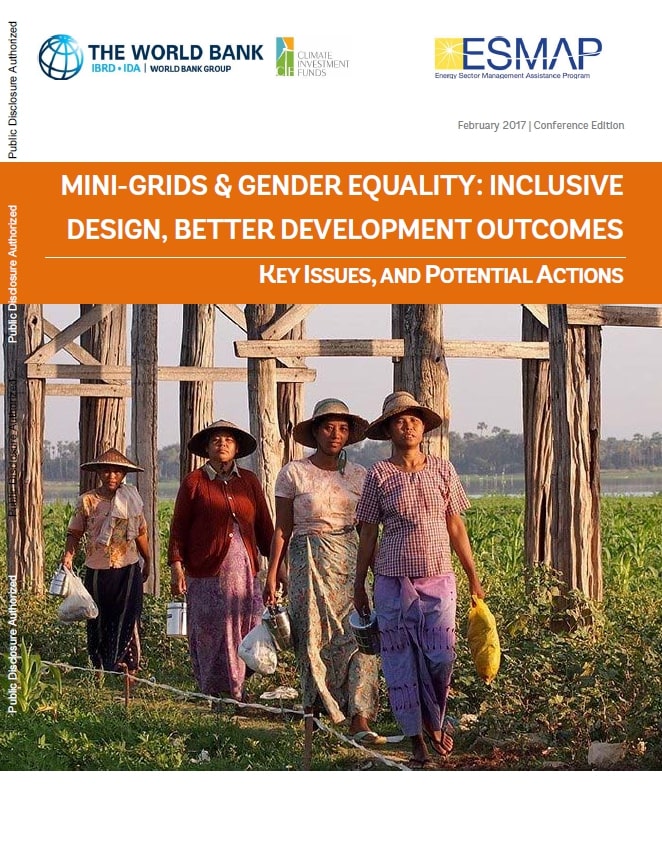Mini-grids and gender equality : inclusive design, better development outcomes
 |
Key issues, and potential actions
decision support instrument Feb 2017 ; 16 pages
Ed. ESMAP - Washington World Bank - Washington
Downloadable format: PdF
Downloadable from the publisher
Editor Presentation
Abstract:
This note is intended to serve as a quick reference guide for applying a gender lens to the design and implementation of a mini‐grid to enhance development outcomes. As mini‐grids are increasingly seen as a potential solution to energy access issues, importance must be placed on ensuring that the benefits and opportunities of the intervention are realized for both men and women. The guidance below provides energy access, social development and gender specialists, with additional ideas and best‐practice approaches to integrate at all stages of the project cycle in order to enhance gender equality. Contents:
Introduction p.1
What is a Mini‐Grid? p.1
Improving Gender Equality Outcomes through Mini‐Grid Projects p.2
Levels of Gender Actions in Mini‐Grid Projects p.4
Entry Points in Mini‐Grid Business Models p.5
Entry Points in Consumer Finance Models p.6
Entry Points in Community Consultation and Planning p.7
Entry Points in Customer Engagement p.8
Entry Points in Productive Uses of Electricity p.8
Entry Points in Monitoring and Evaluation p.10
Entry Points on Policy and Procurement p.11
Conclusion p.12
Target Audiences:
Association , Cooperation actors , Socio-Economist , Local and national decision makers
Keywords: |
gender (CI) (DT) (ET) (ope) , minigrid microgrid (CI) (DT) (ET) (ope) |
Publishers/Broadcasters: |
|
ESMAP
-
Energy Sector Management Assistance Program - Washington - Usa |
World Bank - Washington - Usa |
If there is a broken link, we will be pleased to receive a message: communication@pseau.org